Using Sterile Grass Carp For Natural Aquatic Weed Control

If you own or manage a pond, you know firsthand that maintaining a healthy aquatic ecosystem is both an art and a science. One of the most effective, natural tools for managing aquatic vegetation and keeping your water balanced is stocking grass carp. In this newsletter, we’re diving deep into why stocking your pond with these fish may be the missing piece in your ecosystem management plan.

Why Grass Carp Are Essential for Pond Management
These fish (Ctenopharyngodon idella) are a large herbivorous species originally native to the rivers of East Asia. Introduced into the United States in the 1960s, their primary purpose has been biological weed control. They can grow impressively large, commonly reaching 30 pounds or more, and they have hearty appetites for many types of aquatic vegetation.
These fish are especially popular among pond and lake owners who prefer a more natural, chemical-free method of controlling weed overgrowth. Let us take a closer look at why they can be beneficial to your pond.
The Role of Grass Carp in Pond Ecosystems
Uncontrolled aquatic vegetation is more than just an aesthetic concern. It can lead to oxygen depletion, create habitat imbalances, interfere with recreational activities, and ultimately damage the long-term health of your pond. While some aquatic plants are beneficial and necessary for a balanced ecosystem, excessive or invasive growth can cause a range of problems and impact spawning areas.
These issues include restricted water flow, reduced oxygen levels, harm to fish populations, increased mosquito breeding grounds, and interference with boating or swimming access. Grass carp offer a natural solution by consuming large amounts of vegetation without disturbing the aquatic environment or other species.
Which Weeds Do Grass Carp Eat?
Grass carp have a strong appetite for a wide range of submerged aquatic plants, meaning that they won’t eat anything above the surface. Some of the most common and troublesome weeds they help control include:
1.) Hydrilla (Hydrilla verticillata) is a fast-growing invasive plant that can rapidly cover large areas of water, choking out native species and restricting oxygen flow. Grass carp are particularly effective at consuming hydrilla.
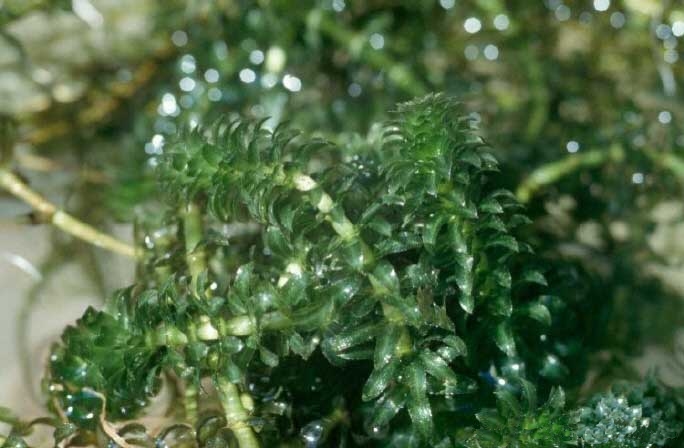
2.) Slender spikerush (Eleocharis baldwinii) is a native plant found in Georgia, known for its ability to stabilize shorelines and improve water clarity in ponds. While beneficial, it can become invasive and problematic for recreational activities if left unmanaged.
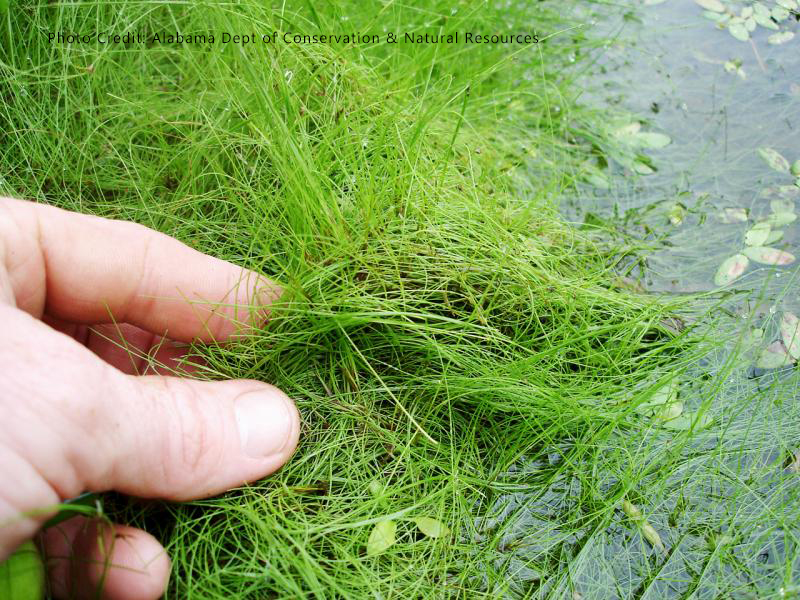
3.) Southern naiad (Najas guadalupensis) is a native submerged aquatic plant found in ponds, lakes, and slow-moving waters. It grows thin, grass-like leaves and forms dense underwater beds that provide habitat for fish and help stabilize sediments, but can quickly get out of control if not managed, especially in clear waters.
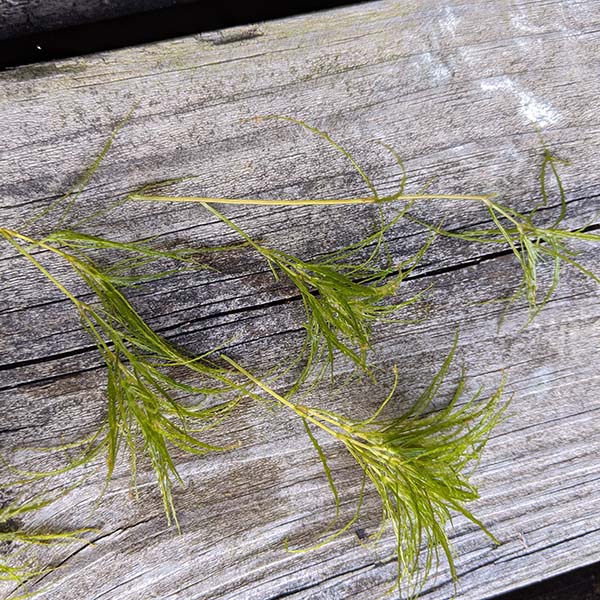
4.) Water thread ((Potamogeton diversifolius))a native submerged aquatic plant found in ponds, lakes, and slow streams. It has slender, thread-like stems with both floating and submerged leaves. This plant provides important habitat for fish and waterfowl but can become dense in nutrient-rich waters.
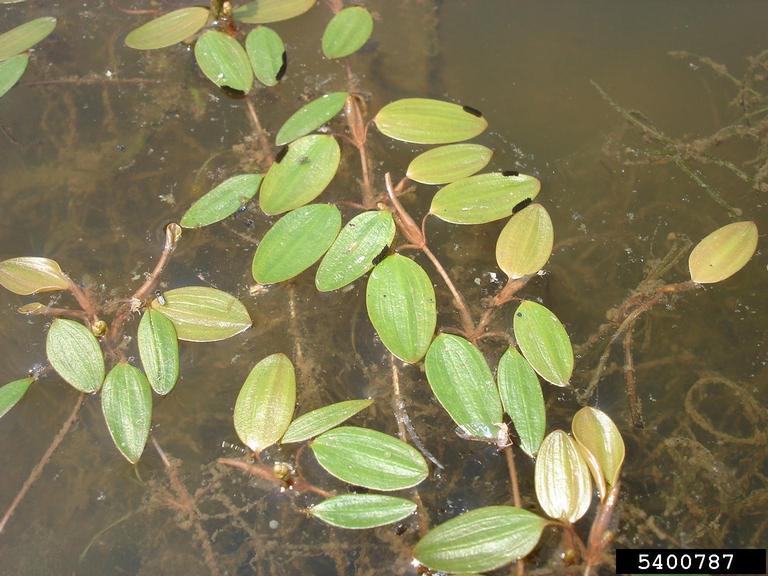
5.) Bladderwort (Utricularia spp.) is a unique, free-floating or submerged aquatic plant known for its small, bladder-like traps used to capture tiny insects and organisms. It has fine, feathery leaves and yellow flowers that rise above the water.
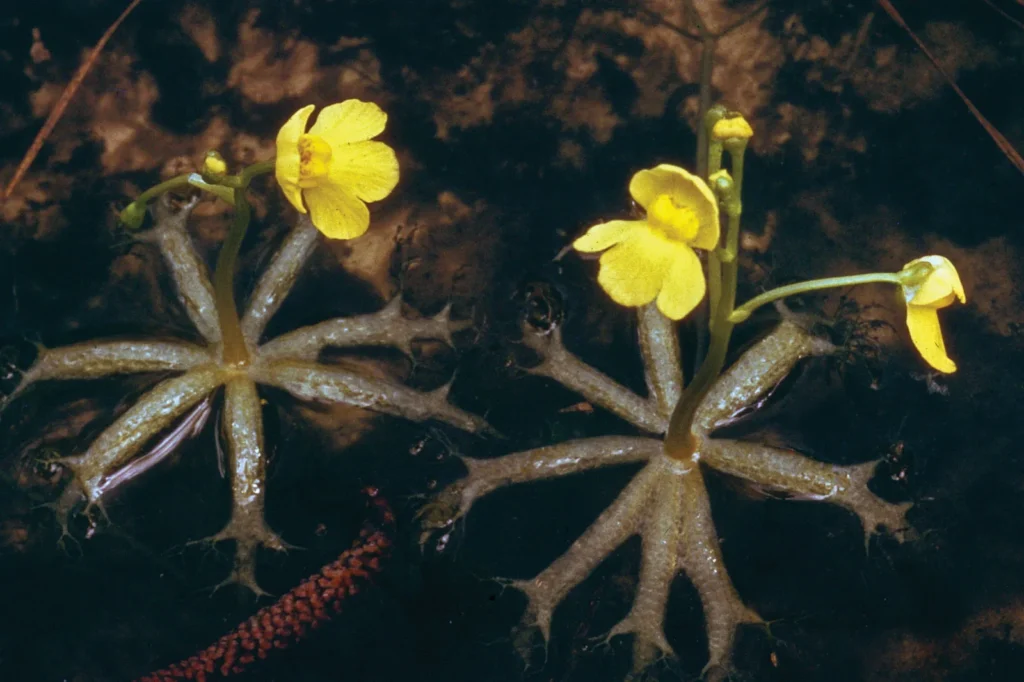
Understanding what grass carp eat is crucial for determining whether they will effectively manage the vegetation problems in your pond. If your pond is dominated by plants that they prefer, they are likely to be an excellent fit for your management strategy.
Grass Carp Growth Cycle and Lifespan
Grass carp grow rapidly under the right conditions. During their first year, they typically reach lengths of 10 to 14 inches. By the end of their second year, they can grow to 18 to 24 inches, and by the third or fourth year, many will exceed 30 inches in length. In nutrient-rich environments, some of these fish have been known to grow over 40 inches and weigh more than 40 pounds.
Their growth rate depends on several factors including water temperature, available vegetation, and overall pond health. Warmer waters with abundant food will lead to faster growth, while cooler, less productive ponds may slow their development.
These fish have a long lifespan. In the wild, they can live up to 15 to 20 years, although in managed pond environments their effective weed control period is generally around 5 to 10 years. As they age, their feeding activity tends to decline, which reduces their effectiveness as a vegetation control tool. For this reason, it is common for pond managers to restock these fish periodically to maintain optimal control.
What Are Triploid Grass Carp and Why Are They Required?
Triploid grass carp are genetically modified to be sterile. This is achieved by exposing the fertilized eggs to a brief period of heat or pressure, which causes the embryos to develop with three sets of chromosomes instead of the usual two. As a result, these fish cannot reproduce.
Many states require the use of triploid fish instead of diploid (fertile) fish to prevent the risk of uncontrolled population growth. If fertile fish were to escape into natural water systems and begin breeding, they could devastate native plant populations and severely disrupt ecosystems. You can read about Georgia’s Department of Natural Resources requirements HERE!
Using triploid fish allows pond owners to reap the benefits of weed control without the environmental risks associated with breeding populations. These sterile fish must often be certified through a ploidy testing process to verify their triploid status before they are approved for use. Hatcheries and suppliers that provide these fish will usually handle this certification and provide documentation to meet state regulations.
The Importance of Responsible Stocking
Stocking grass carp should always be done thoughtfully and responsibly. Overstocking can lead to the complete removal of all vegetation, which may result in negative impacts such as increased algae blooms, loss of fish habitat, and water quality problems. Understocking, on the other hand, may result in ineffective weed control.
The ideal stocking rate depends on the size of your pond, the type and density of the vegetation present, and your specific management goals. For moderate vegetation, a common recommendation is to stock five to fifteen fish per surface acre. For severe infestations of fast-growing invasive species like hydrilla, higher stocking rates may be necessary.
Monitoring your pond regularly and adjusting your stocking rate as needed is key to maintaining balance. If vegetation begins to regrow after several years, it may be time to reintroduce additional grass carp to keep the ecosystem in check.
Regulatory Considerations and Best Practices
Before stocking grass carp, it is important to review and follow all local, state, and federal regulations. Most states require a permit to stock these fish, and many specify that only certified triploid fish may be used. These regulations are in place to protect public water bodies and ensure the responsible use of this powerful management tool.
To ensure compliance:
Check with your local Department of Natural Resources or equivalent regulatory agency. Purchase grass carp only from certified hatcheries (like Edge’s Aquatic Services). Maintain records of stocking dates, fish sizes, and numbers. Install barriers if your pond connects to natural waterways to prevent escape. Regularly monitor plant growth and water conditions to evaluate effectiveness.
Summary
These fish are a valuable addition to pond management strategies when used thoughtfully and responsibly. They provide effective, long-term control of troublesome aquatic vegetation, improve water quality, and reduce reliance on chemicals. By understanding their dietary preferences, life cycle, and legal requirements, pond owners can make informed decisions that benefit both their property and the environment.
If you are considering grass carp for your pond, start by assessing your vegetation issues, consult with Edge’s Aquatic Services, and develop a tailored stocking plan that aligns with your ecosystem goals. With the right approach, grass carp can help you achieve a healthy, balanced, and beautiful aquatic environment for years to come.
You can watch our TIKTOK video about our sterile grass carp HERE!
Contact us for all of your Southeastern fishstocking and pond management needs!
Edge’s Aquatic Services is “Home of the Oxbow Bass” and we’re the one stop shop for all of your lake and pond management needs. Fishstocking services in some areas of Georgia, Alabama, North Carolina, South Carolina, and Florida!
You can view our services HERE!
- Water Quality Management (Liming, Pond Dye, Phosphorous Mitigation, etc.)
- Fish Stocking
- Electrofishing
- Pond and Lake Fountain Installation
- Aquatic Vegetation Control
- Free Phone Consultations
You can view the fish stocking that we offer HERE!
- Sterile Grass Carp
- Bluegill
- Shiners
- Shellcracker
- Catfish
- Crappie
- Oxbow Largemouth Bass
- Golden Shiners
And you can view our products HERE!
- Bojo Dock Lights
- Texas Hunter Fish Feeders
- Pond Dye
- Flowable Lime
- 42% High Protein Fish Feed (Edge’s Fish Smack)
- Pond Structures (Fish Habitat)
- Turtle Traps
- Tags: aquatic services Georgia, backyard pond stocking, F1 Largemouth Bass, fish farm Georgia, fish stocking in florida, fish stocking in georgia, fishing pond stocking, grass carp, how to control weeds in my pond, Oxbow Bass, pond consulting Georgia, pond fish supplier, pond weed control, pondstocking in georgia, private pond fish, steril grass carp

